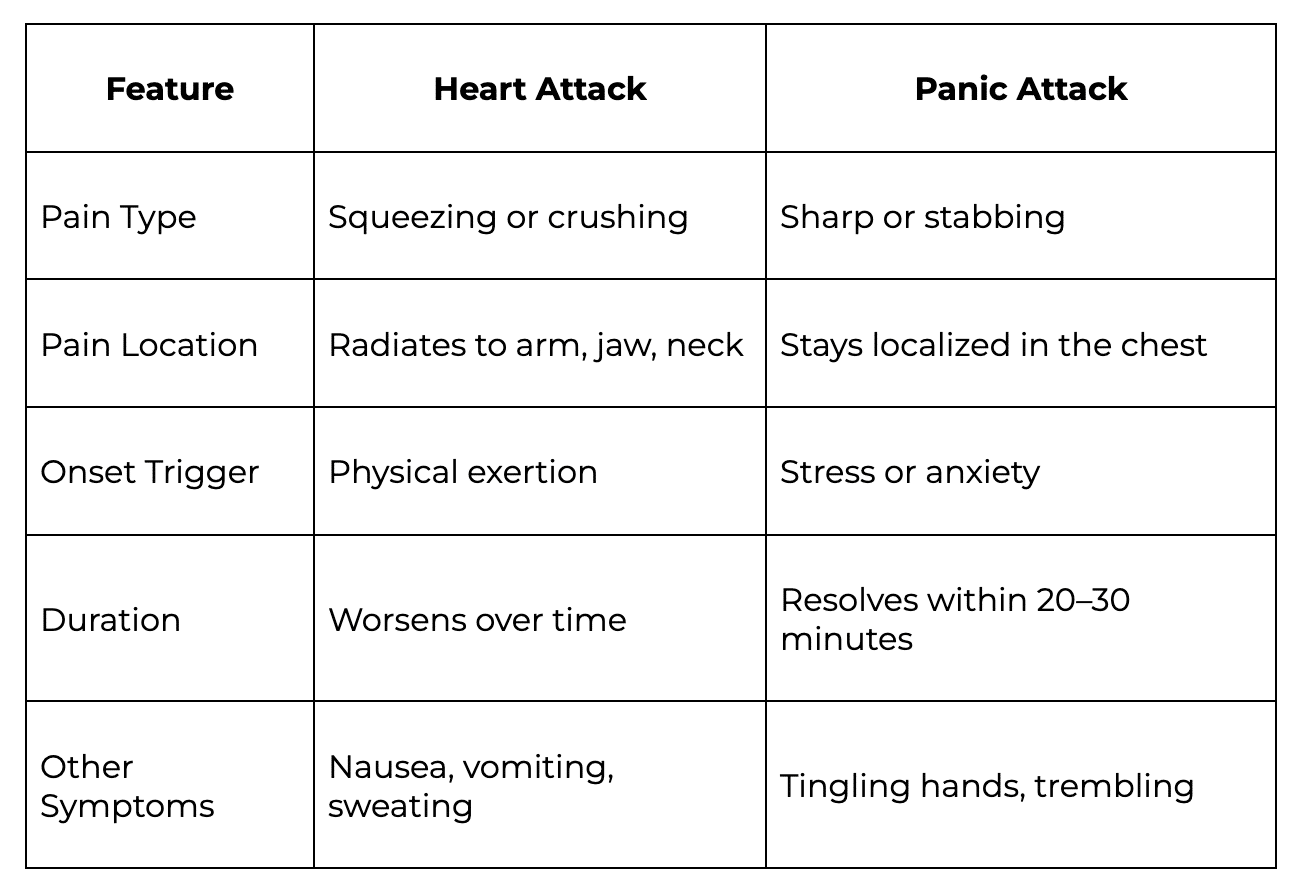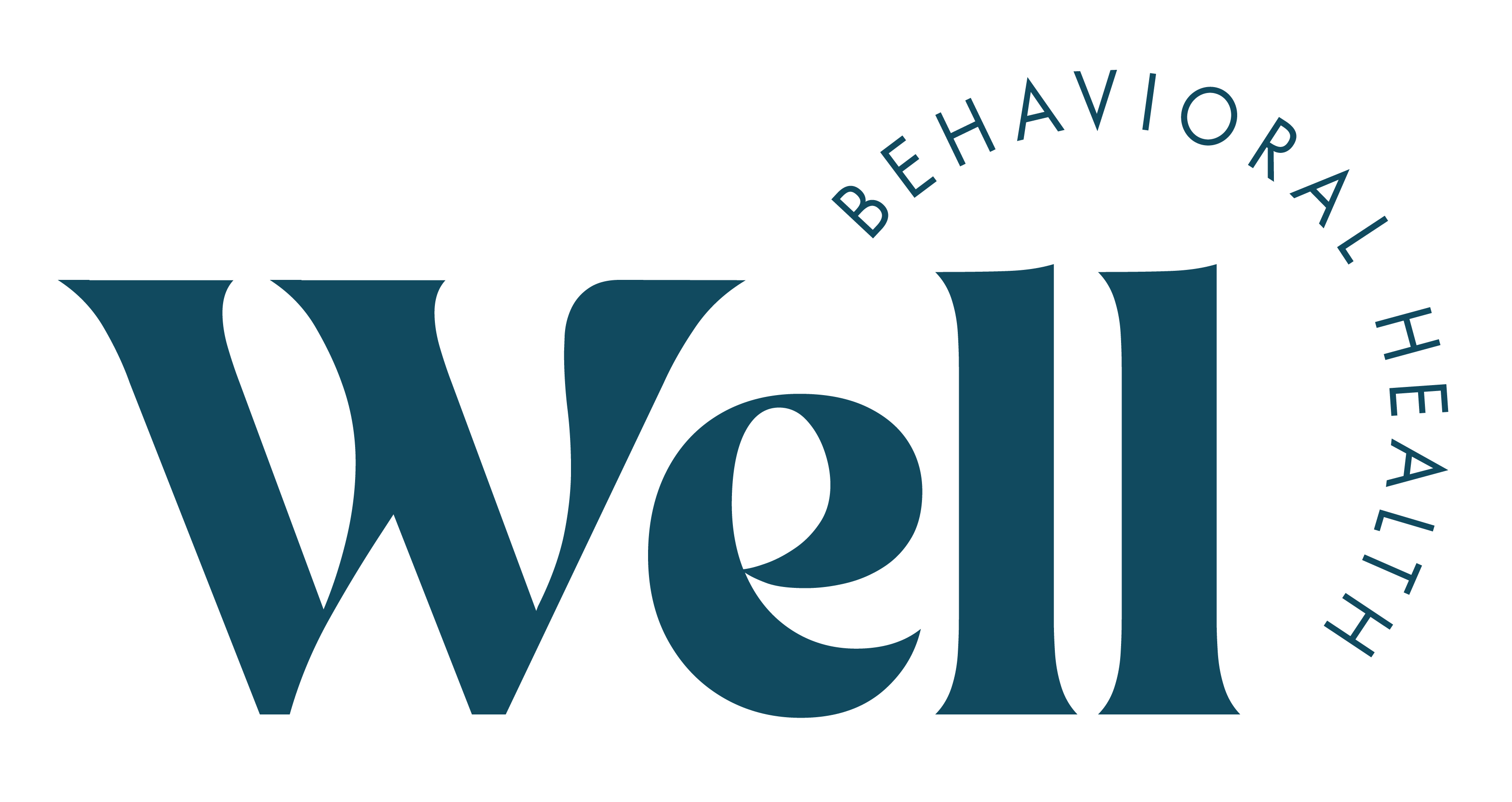Panic Attacks: What They Are and How to Cope
A panic attack is a sudden episode of overwhelming fear or anxiety. It’s often triggered by stress but can also occur without warning. While frightening, panic attacks are not life-threatening. The core symptom of panic disorder is recurrent panic attacks, an overwhelming combination of physical and psychological distress

Why Do They Happen?
- Family Connection: Panic disorder often runs in families, but not everyone inherits it. If someone in your family has panic attacks, your risk of developing it may be up to 40% higher than average. Researchers believe that genetics may increase susceptibility, but environmental factors also play a role.
- Brain Processes: Certain parts of the brain, like the amygdala (the fear center), and biological processes related to stress seem to overreact during panic attacks, triggering “false alarms” of danger.
How Do They Start?
Panic attacks can feel like your body’s survival instincts are misfiring—your heart races, breathing becomes difficult, and you may think you’re having a heart attack. These intense reactions can create a vicious cycle, where fear of another attack leads to more episodes seemingly out of nowhere.
Experiencing sudden chest pain, shortness of breath, or a racing heartbeat can be terrifying. These symptoms often lead people to wonder: Am I having a heart attack or a panic attack? While both conditions share some overlapping symptoms, they are very different in cause, severity, and treatment.

What can I do?
1. Control Your Breathing
- When a panic attack begins, focus on slowing your breath. Try this simple exercise:
- Inhale deeply for 3 seconds.
- Hold your breath for 2 seconds.
- Exhale slowly for 3 seconds.
When stressed, some people breathe too fast (hyperventilate), which lowers carbon dioxide levels in the blood. This causes symptoms like dizziness, tingling, and a pounding heart. Learning slow, steady breathing to calm the body and stop panic.
2. Use Positive Mantras
Calm your mind by repeating reassuring phrases like:
- “This is just my anxiety; it will pass.”
- “I am safe and in control.”
Cognitive-behavioral therapy (CBT) has proven effective for panic attacks by addressing the root cause: catastrophic misinterpretations of harmless bodily sensations (like a racing heart or dizziness). People often mistake these sensations for life-threatening emergencies (e.g., “I’m having a heart attack!”), which fuels anxiety and creates a vicious cycle of panic.
3. Ground Yourself
- Shift your focus to your surroundings. Pick an object nearby and notice its color, shape, and texture. This distraction helps pull your attention away from anxious thoughts.
4. Practice Relaxation Techniques
Reduce stress by incorporating relaxation into your daily routine:
- Try progressive muscle relaxation (tensing and releasing muscles).
- Use mindfulness apps or join a yoga class to stay calm and centered.
5. Talk to Someone You Trust
Share your feelings with a friend or loved one. Talking through your worries can provide relief, advice, and reassurance.
References:
Clark, D. M., Salkovskis, P. M., & Chalkley, A. J. (1985). Respiratory control as a treatment for panic attacks. Journal of Behavior Therapy and Experimental Psychiatry, 16(1), 23-30.
Salkovskis, P. M., Clark, D. M., & Hackmann, A. (1991). Treatment of panic attacks using cognitive therapy without exposure or breathing retraining. Behaviour Research and Therapy, 29(2), 161-166.






